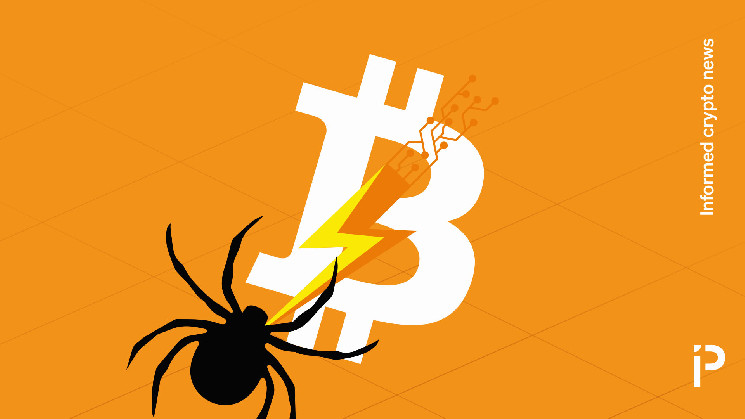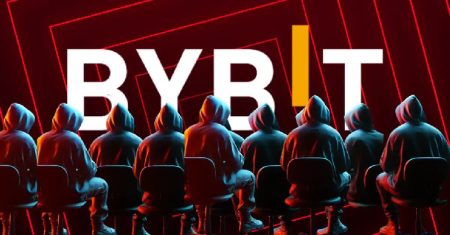A Critical Vulnerability Rocks the Bitcoin Lightning Network
The Bitcoin Lightning Network, a second-layer solution designed to enable faster and cheaper transactions than the base layer of the Bitcoin blockchain, has been hit by a severe bug that has left users and node operators scrambling. On [date], senior Bitcoin developer Calle issued a warning to node operators running outdated versions of the Lightning Network Daemon (LND) software—specifically those using versions older than LND 0.18.5 or LITD 0.14.1. The alert highlighted a critical vulnerability that could allow malicious actors to remotely drain funds from affected nodes. The issue was discovered in how LND handles the description fields of Lightning invoices during the settlement process. Hackers exploiting this vulnerability could manipulate the payment state of invoices, leading to the theft of funds.
The severity of the issue prompted swift reactions across the community. Pavol Rusnak, co-founder of Satoshi Labs, also sounded the alarm, further amplifying the warning. As posts about the vulnerability gained traction, with tens of thousands of impressions across platforms, Lightning Network users took to spreading the word about the imminent threat. The situation underscored the fragile security Trade-offs that users of the Lightning Network often make. While the network offers faster and cheaper transactions compared to on-chain Bitcoin, it also introduces unique vulnerabilities that do not affect the base layer.
Understanding the Lightning Network and Its Risks
The Lightning Network operates as a mesh network with approximately 5,000 BTC locked in public channels, enabling users to make near-instant, low-cost transactions. By routing payments through 44,000 public channels connected by over 16,000 nodes, users sacrifice some of the full security and decentralization guarantees of the Bitcoin base layer in favor of speed, cost-effectiveness, and additional functionalities. This Trade-off has made the Lightning Network popular for small transactions and micro-payments, but it also exposes users to Lightning-specific vulnerabilities that do not exist on the Bitcoin main chain.
The latest bug is a stark reminder of the risks associated with using the Lightning Network. The vulnerability exploits a flaw in how LND processes invoice description fields, allowing attackers to manipulate payment states and drain funds from nodes. This issue is particularly concerning because it directly impacts users who rely on the network for transactions. While the bug has been identified and patches have been released, the window of vulnerability has already put some users at risk.
Patching the Vulnerability: A Race Against Time
To address the vulnerability, developers have released updated versions of the LND and LITD software—LND 0.18.5 and LITD 0.14.1. These patches specifically target the remote threat vector associated with the invoice processing flaw. However, the situation remains urgent, as many nodes are still running outdated versions of the software. LND, in particular, has historically been the preferred choice for most Lightning node operators, and as of the time of writing, hundreds or even low-single-digit thousands of nodes remain unpatched despite the release of LND 0.18.5 just last week.
The bug itself relates to the inability of certain invoices—specifically Atomic Multi-Path (AMP) invoices—to cancel if they have a settled sub-invoice. Developer ziggie1984 proposed a patch that would allow AMP invoices to expire even if they have a settled sub-invoice, addressing the core issue. Additionally, Lightning Labs’ Effet Cantillon offered some reassurance to merchants using Lightning Labs’ software, noting that those who do not interact with invoices generated by external services like BTCPay may be less affected. BTCPay Server, a popular payment processing solution, had already upgraded its LND node to version 0.18.5, reducing its exposure to the vulnerability.
Real-World Impacts and Community Response
While the vulnerability is still active as of the time of writing, there are already reports of real-world theft. Comments on popular posts on X (formerly Twitter) revealed a few instances of funds being stolen, though details were sparse. The live nature of the vulnerability has left many in the community on edge, as attackers continue to exploit unpatched nodes. Despite this, the response from the Lightning Network development community has been swift and decisive. All major developers, including the team behind LND, have strongly advised users to upgrade their software to the latest versions to fix the exploit.
Lightning Labs, the organization leading the development of LND, has not yet issued an official statement on the matter. However, a pull request on GitHub indicates that the development team was aware of the issue at least three weeks ago, suggesting that they were working on a fix even before the vulnerability became public knowledge. This behind-the-scenes work highlights the importance of ongoing development and the need for users to stay up to date with the latest software releases.
Lessons Learned: The Delicate Balance of Security and Innovation
The recent vulnerability in the Lightning Network serves as a stark reminder of the challenges inherent in maintaining a balance between security and innovation in the cryptocurrency space. While the Lightning Network has revolutionized the way Bitcoin is used for everyday transactions, its complexity and reliance on second-layer solutions introduce unique risks. This incident underscores the importance of vigilance, rapid communication, and swift action within the developer and user communities.
Going forward, users and node operators must remain vigilant, ensuring that their software is always up to date and that they are aware of the latest security developments. For developers, the incident highlights the need for continuous testing, bug bounty programs, and transparent communication. The Bitcoin Lightning Network has the potential to play a transformative role in the crypto ecosystem, but realizing that potential will require a continued focus on security, collaboration, and education.
In conclusion, the recent bug in the Lightning Network is a wake-up call for the entire crypto community. It emphasizes the delicate balance between innovation and security and reminds us of the importance of preparedness and collaboration in the face of emerging threats.















